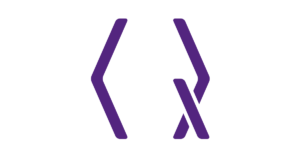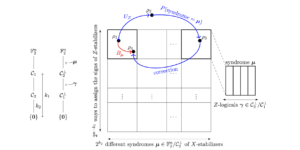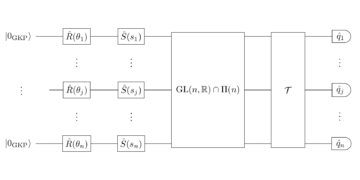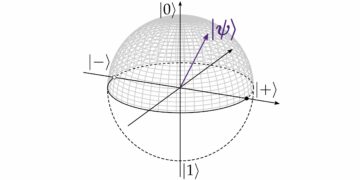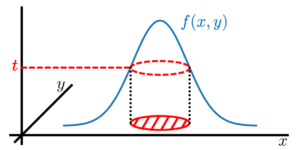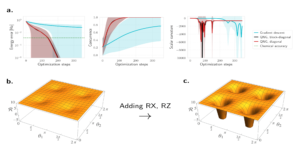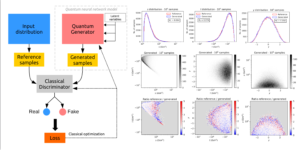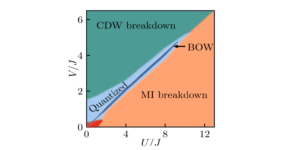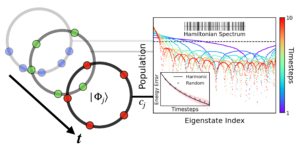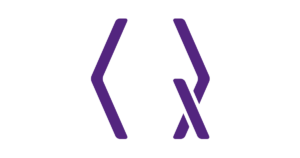موسسه فیزیک نظری و IQST، دانشگاه اولم، آلبرت-اینشتین-آلی 11 89081، اولم، آلمان
Universit$grave{a}$ degli Studi di Palermo, Dipartimento di Fisica e Chimica – Emilio Segrè, via Archirafi 36, I-90123 Palermo, Italy
این مقاله را جالب می دانید یا می خواهید بحث کنید؟ SciRate را ذکر کنید یا در SciRate نظر بدهید.
چکیده
اندازه گیری زمان به معنای شمارش وقوع پدیده های دوره ای است. در طول قرن های گذشته تلاش زیادی برای ساخت نوسانگرهای پایدار و دقیق انجام شد تا از آنها به عنوان تنظیم کننده ساعت استفاده شود. در اینجا ما یک کلاس متفاوت از ساعت ها را بر اساس فرآیندهای کلیک تصادفی در نظر می گیریم. ما یک چارچوب آماری دقیق برای مطالعه عملکرد چنین دستگاههایی ارائه میکنیم و نتایج خود را روی یک اتم منسجم دو سطحی تحت تشخیص نوری بهعنوان مثالی افراطی از ساعت غیر تناوبی اعمال میکنیم. شبیهسازیهای پرش کوانتومی مونت کارلو و توزیع زمان انتظار شمارش فوتون، بررسیهای مستقلی را بر روی نتایج اصلی ارائه میدهند.
خلاصه محبوب
► داده های BibTeX
◄ مراجع
[1] G. W. Ford. “The fluctuation-dissipation theorem”. Contemporary Physics 58, 244–252 (2017).
https://doi.org/10.1080/00107514.2017.1298289
[2] Henry Reginald Arnulph Mallock. “Pendulum clocks and their errors”. Proceeding of the Royal Society A 85 (1911).
https://doi.org/10.1098/rspa.1911.0064
[3] M Kesteven. “On the mathematical theory of clock escapements”. American Journal of Physics 46, 125–129 (1978).
[4] Peter Hoyng. “Dynamics and performance of clock pendulums”. American Journal of Physics 82, 1053–1061 (2014).
https://doi.org/10.1119/1.4891667
[5] S. Ghosh, F. Sthal, J. Imbaud, M. Devel, R. Bourquin, C. Vuillemin, A. Bakir, N. Cholley, P. Abbe, D. Vernier, and G. Cibiel. “Theoretical and experimental investigations of 1/f noise in quartz crystal resonators”. 2013 Joint European Frequency and Time Forum International Frequency Control Symposium (EFTF/IFC)Pages 737–740 (2013).
https://doi.org/10.1109/EFTF-IFC.2013.6702262
[6] G. J. Milburn. “The thermodynamics of clocks”. Contemporary Physics 61, 69–95 (2020).
https://doi.org/10.1080/00107514.2020.1837471
[7] Paul Erker, Mark T. Mitchison, Ralph Silva, Mischa P. Woods, Nicolas Brunner, and Marcus Huber. “Autonomous quantum clocks: Does thermodynamics limit our ability to measure time?”. Phys. Rev. X 7, 031022 (2017).
https://doi.org/10.1103/PhysRevX.7.031022
[8] Mischa P. Woods. “Autonomous ticking clocks from axiomatic principles”. Quantum 5, 381 (2021).
https://doi.org/10.22331/q-2021-01-17-381
[9] A. N. Pearson, Y. Guryanova, P. Erker, E. A. Laird, G. A. D. Briggs, M. Huber, and N. Ares. “Measuring the thermodynamic cost of timekeeping”. Phys. Rev. X 11, 021029 (2021).
https://doi.org/10.1103/PhysRevX.11.021029
[10] هاینز-پیتر برویر و فرانچسکو پتروشیونه. نظریه سیستم های کوانتومی باز انتشارات دانشگاه آکسفورد. (2007).
https://doi.org/10.1093/acprof:oso/9780199213900.001.0001
[11] Howard M. Wiseman and Gerard J. Milburn. “Quantum measurement and control”. Volume 9780521804424, pages 1–460. Cambridge university press. (2009).
https://doi.org/10.1017/CBO9780511813948
[12] Serge Haroche and Jean Michel Raimond. “Exploring the Quantum: Atoms, Cavities, and Photons”. Oxford Univ. Press. Oxford (2006).
https://doi.org/10.1093/acprof:oso/9780198509141.001.0001
[13] Crispin Gardiner, Peter Zoller, and Peter Zoller. “Quantum noise: a handbook of markovian and non-markovian quantum stochastic methods with applications to quantum optics”. Springer Science & Business Media. (2004).
https://doi.org/10.48550/ARXIV.QUANT-PH/9702030
[14] Todd A. Brun. “Continuous measurements, quantum trajectories, and decoherent histories”. Physical Review A 61 (2000).
https://doi.org/10.1103/physreva.61.042107
[15] Todd A. Brun. “A simple model of quantum trajectories”. American Journal of Physics 70, 719–737 (2002).
https://doi.org/10.1119/1.1475328
[16] M. B. Plenio and P. L. Knight. “The quantum-jump approach to dissipative dynamics in quantum optics”. Rev. Mod. Phys. 70, 101–144 (1998).
https://doi.org/10.1103/RevModPhys.70.101
[17] Daniel Manzano and Pablo I Hurtado. “Symmetry and the thermodynamics of currents in open quantum systems”. Phys. Rev. B 90, 125138 (2014).
https://doi.org/10.1103/PhysRevB.90.125138
[18] VV Belokurov, OA Khrustalev, VA Sadovnichy, and OD Timofeevskaya. “Conditional density matrix: Systems and subsystems in quantum mechanics” (2002). url: arxiv.org/abs/quant-ph/0210149.
arXiv:quant-ph/0210149
[19] Vittorio Gorini, Andrzej Kossakowski, and Ennackal Chandy George Sudarshan. “Completely positive dynamical semigroups of n-level systems”. Journal of Mathematical Physics 17, 821–825 (1976).
https://doi.org/10.1063/1.522979
[20] Goran Lindblad. “On the generators of quantum dynamical semigroups”. Communications in Mathematical Physics 48, 119–130 (1976).
https://doi.org/10.1007/BF01608499
[21] RS Ellis. “An overview of the theory of large deviations and applications to statistical mechanics.”. Insurance Mathematics and Economics 3, 232–233 (1996).
https://doi.org/10.1080/03461238.1995.10413952
[22] Hugo Touchette. “The large deviation approach to statistical mechanics”. Physics Reports 478, 1–69 (2009).
https://doi.org/10.1016/j.physrep.2009.05.002
[23] Angelo Vulpiani, Fabio Cecconi, Massimo Cencini, Andrea Puglisi, and Davide Vergni. “Large deviations in physics”. The Legacy of the Law of Large Numbers (Berlin: Springer) (2014).
https://doi.org/10.1007/978-3-642-54251-0
[24] Juan P Garrahan and Igor Lesanovsky. “Thermodynamics of quantum jump trajectories”. Phys. Rev. Lett. 104, 160601 (2010).
https://doi.org/10.1103/physrevlett.104.160601
[25] Charles Jordan and Károly Jordán. “Calculus of finite differences”. Volume 33. American Mathematical Soc. (1965).
[26] Bassano Vacchini. “General structure of quantum collisional models”. International Journal of Quantum Information 12, 1461011 (2014).
https://doi.org/10.1142/s0219749914610115
[27] Howard Carmichael. “An open systems approach to quantum optics: lectures presented at the université libre de bruxelles, october 28 to november 4, 1991”. Volume 18. Springer Science & Business Media. (2009).
[28] H. J. Carmichael, Surendra Singh, Reeta Vyas, and P. R. Rice. “Photoelectron waiting times and atomic state reduction in resonance fluorescence”. Physical Review A 39, 1200–1218 (1989).
https://doi.org/10.1103/PhysRevA.39.1200
[29] A. A. Gangat and G. J. Milburn. “Quantum clocks driven by measurement” (2021). arXiv:2109.05390.
arXiv: 2109.05390
[30] James M. Hickey, Sam Genway, Igor Lesanovsky, and Juan P. Garrahan. “Thermodynamics of quadrature trajectories in open quantum systems”. Physical Review A 86 (2012).
https://doi.org/10.1103/physreva.86.063824
[31] Dario Cilluffo, Salvatore Lorenzo, G Massimo Palma, and Francesco Ciccarello. “Quantum jump statistics with a shifted jump operator in a chiral waveguide”. Journal of Statistical Mechanics: Theory and Experiment 2019, 104004 (2019).
https://doi.org/10.1088/1742-5468/ab371c
ذکر شده توسط
این مقاله در Quantum تحت عنوان منتشر شده است Creative Commons Attribution 4.0 International (CC BY 4.0) مجوز. حق چاپ نزد دارندگان حق چاپ اصلی مانند نویسندگان یا مؤسسات آنها باقی می ماند.


